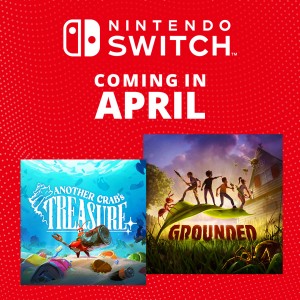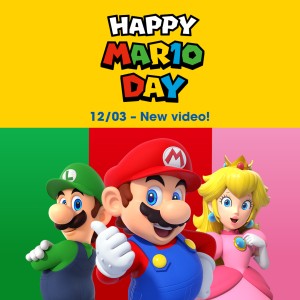Interview Metroid Prime Pinball, pt. 1
20/06/2007
Unless you speak fluent Japanese, chances are slim that you ever read any of the in-depth interviews at Nintendo Online Magazine.
Today we make things a little easier, and present you with a fully translated interview with the development team behind the upcoming Metroid Prime Pinball. But first, let's present the participants...
The Metroid Prime Pinball Development Team
Adrian Barritt, Fuse Games
Cai Remrod, Fuse Games
Richard Horrocks, Fuse Games
Keisuke Terasaki, Supervisor, Nintendo
Hiro Yamada, Supervisor, Nintendo
Masa Miyazaki, Supervisor, Nintendo
Your humble interviewer for today is the chief editor of Nintendo Online Magazine.
Overcoming the time difference, language barrier and vast distances, we conducted a telephone interview from Japan with Fuse Games, based near Oxford in the UK. Fuse are the development team behind Metroid Prime Pinball, a title which is clearly a labour of love, faithful to classic pinball which at the same time packed with cutting-edge features.
Making a digression to discuss a certain surprising hidden character, apparently well-known in Europe and the US, it was an entertaining and enlightening interview!
A collaboration between true pinball fans
NOM: "How did the idea for this title first come about?"
Yamada: "When (Nintendo President) Satoru Iwata was still a programmer, he worked on Pinball for the NES. For that reason, he is very knowledgeable about pinball games. Apparently when he saw some prototype pinball software that Fuse Games had developed for Game Boy Advance, he thought: 'This is incredibly well put together. If we leave these developers to it, they'll come up with something special.' What came out of that was Super Mario Ball for Game Boy Advance. The DS was subsequently released, and thinking that the two screens could be used to replicate a pinball table, we asked Fuse to think about what kind of pinball game they could come up with for the console."
NOM: "When did you decide to base it on Metroid Prime?"
Barritt: "The Metroid theme was first mooted by Nintendo. Funnily enough, before they suggested it, we had already thought about Metroid and it was on our list of proposals. So when the suggestion came from Nintendo, we were all really excited!" (laughter)
Yamada: "Our request was that Fuse should work on developing a stylish, cool pinball game based on the Metroid universe."
Barritt: "We first worked on the Pirate Frigate stage as a prototype. We thought that of all the many varied worlds in the game, we wanted to use one which was both hi-tech and which gave a strong sense of being in space, so we went for that one."
Yamada: "When I saw the prototype, I though that Fuse had captured the feel of Metroid Prime perfectly and had produced something that convinced us they were more than a match for the task. I also had the chance to show it to a range of people at NOA (Nintendo of America). The feedback was that it was even better than anyone had expected and really brought the world of Metroid alive. Also, when we requested that they make a feature where Samus exits the Morph Ball mode and attacks the enemies with all guns blazing, Fuse came up with this very quickly indeed. I was impressed, to say the least."
Terasaki: "We left it entirely to Fuse Game's discretion which aspects of the Metroid universe they would use in the game. I believe that this was one area where Cai put in a lot of hard work."
Remrod: "Well, we all worked together on selecting the features and items from Metroid that we would include in the game. The method we used for actually creating the stages was to select items and objects that would react in some way when the player attacked them with the ball."
Yamada: "It seems that the selection of what to use in the game took place in tandem with the development of the concept of the attack-based gameplay."
NOM: "How did you go about making the game faithful to the Metroid universe?"
Barritt: "Utilising the Metroid universe really meant taking elements like Samus' weapon upgrades, power-ups for the Morph Ball and other features from Metroid Prime on the GameCube and finding ways of integrating them into a pinball game."
Miyazaki: "When I went to the UK, we spoke directly and I told Fuse about particular elements that we wanted to see included in the game."
Terasaki: "The requests we made were, for instance, ensuring that the game was consistent with the Metroid Prime universe, emphasising the stylish feel we wanted it to have, and stressing that as a basic pinball game it should still be playable for long periods without the player tiring of it. We also requested that wherever the ball hits, something should occur. We didn't want any places where the ball could hit without it triggering some sort of reaction."
NOM: "Where do you think the basic appeal of pinball lies?"
Remrod: "I think it's the fact that the same thing will never occur twice. Every time you hit the ball, the game itself will change. To maintain that factor, we included the nudge effect (jostling the pinball machine to influence the ball's movement), controlled using the Touch Screen."
Barritt: "Pinball by its nature is very gaudy and showy. When you play it, it's because you want to cause all sorts of things to happen."
Come back soon for part 2 of this interview!
Metroid Prime Pinball will be in shops June 22, only on Nintendo DS.





